Geologie trefwoord D →
← INHOUD O/P / PALEONTOLOGIE
EXTERNE LINKS & bronnen
–> Nederlands WOORDENLIJST
http://www.fossiel.net/information/article.php
–> English
http://palaeos.com/paleontology/glossary.html
A | B | C | D | E | F | G | H | I | J | K | L | M | N | O | P | Q | R | S | T | U | V | W | X | Y | Z
Paleontological glossary (Choose the first letter of the the term you’re interested)
in: | A | B | C | D | E | F | G | H | I | J | K | L | M | N | O | P | Q | R | S | T | U | V | W | X | Y | Z |
_________________________________________________________________________________________
Verklarende woordenlijst Paleontologie
D
Dactylioceras ….Ammonieten,uit het Midden- en Onder-Jura. o.a. bekend uit Holzmaden in Duitsland.
http://nl.wikipedia.org/wiki/Dactylioceras


Dactylioceras sp. / A fossil Ammonite, Dactylioceras sp., from the Jurassic (Toarcian) Shale of Holzmaden, Germany.
http://de.wikipedia.org/wiki/Posidonienschiefer-Formation
Lias Holzmaden

°
Decapoda …. voorbeeld : Meyeria (klasse Malacostraca, orde Decapoda, onderorde Pleocyemata). Een kreeft. Bekend uit het Onder-Krijt van Bentheim en van het isle of wight

http://palaeo.gly.bris.ac.uk/Palaeofiles/Fossilgroups/Decapoda/fossilrecord.html
 anomura (germany )
anomura (germany )
_____________________________________________________________________________
Demospongiae //Demosponzen // —
Demospongiae =Demosponzen = ‘gewone sponzen’ met een skelet van hoornachtig materiaal =spongine, of van kiezelzuur zonder spongine.

This phylogenetic tree uses biological systematics. All of the shown genera and species belong to the class Demospongiae as well as the order Homoscleromorpha based on 28S rDNA analyses.
http://bioweb.uwlax.edu/bio203/2011/pluym_conn/phylogeny.htm

Calcareous skeletons apparently evolved independently within three classes of sponges—Calcarea, Demospongiae, and Archaeocyatha.
Class Demospongea
Sponges with skeletons of spongin, spongin and siliceous spicules, or a skeleton of fused opaline silica.
When present, spicules are commonly monaxon, tetraxon, or polyaxon, but never triaxon.
| Nomenclature of Common Megascleres & Microscleres in Fossil and Modern Sponges |
 |
|
Modified from Boardman et al (1987)
|
Here is an example of a modern demosponge with spongin.

Here is a good example of a fossil demosponge.
Note in this specimen the canals in the siliceous walls.
Note that calcification also occurs in demospongiae
________________________________________________________________________________________
Dendrieten // PSEUDOFOSSIELEN …. op gesteenten kunnen soms dendrieten voorkomen —> op boomtakken of mos gelijkende afzettingen van mangaan- of ijzerverbindingen. (dendron = boom.)
Afbeeldingen van Dendrites(crystal)


Manganese dendrites on a limestone bedding plane from
Solnhofen, Germany. Scale in mm.
http://en.wikipedia.org/wiki/Dendrite_(crystal)
http://nl.wikipedia.org/wiki/Dendriet_(kristal)
°
Dendrietisch //Als een dalstelsel in een homogene ondergrond ongestoord en volledig tot ontwikkeling kan komen, dan vormt er zich een dendrietisch = boomvormig dalstelsel. NB. Dendron = boom. Zo’n stelsel omvat veel kleineeinddalletjes = brondalletjes, die zelf geen zijdalletjes meer hebben. Ze worden dalletjes van de eerste orde genoemd. Deze stromen uit in dalen van de tweede orde, die in dalen van de derde orde, enz. Hethoofddal is het dal van de hoogste orde. De verhouding van het aantal dalen van opeenvolgende orde noemt men de bifurcation ratio = de vertakkingfactor van het dalstelsel of deel daarvan.
Er bestaan allerlei wetmatigheden; waaraan de omstandigheden binnen een dalstelsel voldoen. Ze zijn vastgelegd in de Wetten van Horton.
________________________________________________________________________________________
Dendrograptus // —-> Dendrograptus is an extinct genus of Graptolite from the Lower Ordovician.
http://fossiilid.info/9947

GIT 539-48-1 Dendrograptus sp.
INFO | IMAGE

GIT 539-48-2 Dendrograptus sp.
INFO | IMAGE

GIT 539-48-2 Dendrograptus sp.
INFO | IMAGE

GIT 119-19 Dendrograptus vulgaris Obut, 1953
INFO | IMAGE
____________________________________________________________________________________
°
DENTALIUM Dentalium
Mollusca (Weekdieren) Klasse: Scaphopoda (Tandschelpen) Orde: Dentaliida http://nl.wikipedia.org/wiki/Dentalium


Antalis vulgaris (o Dentalium vulgaris): ) // Dentalium is een geslacht van weekdieren, dat fossiel bekend is vanaf het Ordovicium. Tegenwoordig bestaan er nog enkele soorten van dit geslacht.

Fossil scaphopod (tusk shell), Dentalium; middle Miocene (c. 15 my old), Mornington, Victoria
Photographer: John Broomfield / Source: Museum Victoria
°
Specimens found in the Stone City Formation (aka Whiskey Bridge) of Brazos River, near Bryan, Texas.
_________________________________________________________________________________________
DEVOON
The Devonian Period: The Age of Fish
Devonian —> A period of the Paleozoic era, spanning the time between 410 and 360 million years ago. It is named after Devonshire, England, where rocks of this age were first studied. (USGS Paleontology glossary)
First clubmosses, horsetails and ferns appear, as do the first seed-bearing plants (progymnosperms), first trees (the progymnosperm Archaeopteris), and first (wingless) insects.
Strophomenid and atrypid brachiopod,rugose and tabulate corals, and crinoids are all abundant in the oceans. Goniatite ammonoids are plentiful, while squid-like coleoids arise.
Trilobites and armoured agnaths decline, while jawed fishes (placoderms, lobe-finned and ray-finned fish, and early sharks) rule the seas.
First amphibians still aquatic.
“Old Red Continent” of Euramerica. Beginning of Acadian Orogeny for Anti-Atlas Mountains of North Africa, and Appalachian Mountains of North America, also the Antler, Variscan, and Tuhua Orogeny in New Zealand. (Wikipedia) More
°
The Devonian Period of the Paleozoic Era lasted from 417 million years ago to 354 million years ago. It is named for Devon, England where the old red sandstone of the Devonian was first studied.
The Continents of The Devonian
During the Devonian there were important changes in the land masses on the globe. North America and Europe had collided forming a large continent called Euramerica. This caused the formation of the Appalachian Mountain Range. The other large land mass was Gondwana. It was made up of South America, Africa, Antarctica, India and Australia. These two large land masses lay close to one another near the equator.

The two continents were moving toward each other throughout the Devonian Period. The waterway between the two continents covered a subduction zone. This is an area where one plate is moving underneath the other. Eventually this would mean that the two continents would collide to form the supercontinent Pangea in the Permian Period. That event is more than 64 million years later.
Plants Cover The Land
Laying so close to the equator meant that the climate of the Devonian was warm. The warm temperatures made life on land particularly good for the plants. They developed vascular tissues to carry water and food through roots and leaves. The most important development was the seed. Now plants were not dependent on the presence of water for reproduction and they could move further inland. Ferns and the first trees began to cover the land.
Insects and Other Animals Find Homes On Land
The plant-covered lands made a good home for the first wingless insects and spiders. Even a primitive vertebrate, the tetrapod or four-footed vertebrate, developed the ability to live outside the water and move on land.
The Age of Fishes
Spindle diagram for the evolution of fish and other vertebrate classes.Conventional classification has living
vertebrates as a subphylum grouped into eight classes based on traditional interpretations of gross
anatomical and
physiological traits. In turn, these classes are grouped into the vertebrates that have four limbs (the
tetrapods) and those that do not:
fishes. The
extant vertebrate classes are:
- Fish:
-
- Tetrapods:
-
In addition to these are two classes of extinct jawed fishes, the armoured placoderms and the spiny sharks.
The Devonian is known as the Age of Fishes. It is famous for the thousands of species of fish that developed in Devonian seas. We know this because of the fish fossils found in Devonian rocks. When fish first started to develop, they had no jaws and the support structure was made of cartilage. This material doesn’t fossilize well, so the earliest fossils were of fish whose outside skin was protected by scales and plates made of boney tissue. These fish were called Ostracoderms. Their name means “shell-skins.” These animals appear in rock from the late Silurian and early Devonian periods.

Fish with Jaws
The next development was the fish with jaws, gills and paired fins. The Placoderms were the first fish to have all three of these characteristics. They still had the “shell skin” of the Ostracoderms, but it mainly covered the head and neck area. The largest of the Placoderms was the Dunkleosteus. It was a huge predator in the Devonian seas. It could be as long as 10 meters. Instead of teeth, it had large boney plates that stuck down in the front of its mouth opening. The powerful jaws were deadly to other fish, sharks and even other Dunkleosteus.

Ancient Sharks
Sharks, or Chondricthyes, developed during the Devonian also. Sharks are thought to be descendents of the large Placoderms, but they lost the ability to form the boney armor on the outside of the body and were unable to form bones on the inside also. Their body is supported by cartilage. Because of the skeletons of cartilage, very little fossil evidence is available. They did leave behind their teeth. Much of the information we have about ancient sharks comes from the many different types of fossil teeth that have been found. Sharks first appear during the middle of this period.
The Bony Fish; Osteichthyes
-
The bony fish appear during the Devonian Period. The first of these are the lobe-fins. These fish have pairs of fins with fleshy lobes at the base and more typical fin membranes at the ends. The lobes contain jointed bones. These lobe-fins are thought to have evolved into “legs” and eventually into amphibians that spend their lives both in and out of the water.
The coelacanth is a lobe-fin fish that developed during the Devonian. For years it was thought to have gone extinct at the end of the Mesozoic Era along with the dinosaurs, but in 1938 a living coelacanth was caught. Since then coelacanths have been seen from time to time in the Indian Ocean.
The Lung Fish
The Dipterus was a lungfish that developed at this time. In many ways it looked like the lobe-fins with bony flesh at the base of its fins. But the Dipterus had lung sacks branching off of its throat that got air from the gills. During the Devonian Period, there were huge swings of floods and drought. During drought times, when lakes turned into ponds, the plants used all the oxygen in the little water that remained. A Dipterus that was stranded in such a pool could stick its head out of the water and get the air it needed to stay alive.
The Reef Builders
The reef building work of the sponges and corals went on through the Paleozoic Era. They built some of the largest reefs in the world. Invertebrates grew well in Devonian seas too, so many new species developed. The ammonite is one of these.
Mass Extinction Ends The Period
Species had begun to branch out and include both land and water habitats. The Devonian Period ended with a mass extinction. The Devonian extinction hurt the water habits much more than those on land. The sponges and corals were the most affected. No major reef building happened again for thousands of years.



Change in the Devonian Seas
The Devonian seas were dominated by brachiopods, such as the spiriferids, and by tabulate and rugose corals, which built large bioherms, or reefs, in shallow waters. Encrusting red algae also contributed to reef building. In the Lower Devonian, ammonoids appeared, leaving us large limestone deposits from their shells. Bivalves, crinoid and blastoid echinoderms, graptolites, and trilobites were all present, though most groups of trilobites disappeared by the close of the Devonian.
The Devonian is also notable for the rapid diversification in fish. Benthic armored fish are common by the Early Devonian. These early fish are collectively called “ostracoderms“, and include a number of different groups. By the Mid-Devonian, placoderms, the first jawed fish, appear. Many of these grew to large sizes and were fearsome predators. Of the greatest interest to us is the rise of the first sarcopterygiians, or the lobe-finned fish, which eventually produced the first tetrapods just before the end of the Devonian.
Change in the Devonian Landscape

By the Devonian Period, life was well underway in its colonization of the land. Before this time, there is no organic accumulation in the soils, causing these soil deposits to be a reddish color. This is indicative of the underdeveloped landscape, probably colonized only by bacterial and algal mats.
By the start of the Devonian, however, early terrestrial vegetation had begun to spread. These plants did not have roots or leaves like the plants most common today, and many had no vascular tissue at all. They probably spread largely by vegetative growth, and did not grow much more than a few centimeters tall. These plants included the now extinct zosterophylls and trimerophytes. The early fauna living among these plants were primarily arthropods: mites, trigonotarbids, wingless insects, and myriapods, though these early faunas are not well known.
By the Late Devonian, lycophytes, sphenophytes, ferns, and progymnosperms had evolved. Most of these plants have true roots and leaves, and many are rather tall plants. The progymnosperm Archaeopteris, whose leaves are shown at right, was a large tree with true wood. In fact it is the oldest such tree known, and produced some of the world’s first forests. By the end of the Devonian, the first seed plants had appeared. This rapid appearance of so many plant groups and growth forms has been called the “Devonian Explosion”. Along with this diversification in terrestrial vegetation structure, came a diversification of the arthropods.
Devonian Times presents oodles of information about early forests and the first vertebrates on land. The information is based on findings at Red Hill, Pennsylvania, USA.
Read about the Devonian Mass Extinction at the Hooper Virtual Paleontology Museum.
Find out more about the Devonian paleontology and geology of North America at the Paleontology Portal.
_________________________________________________________________________________________
Diagenesis:
*The process during which sediments are compacted and/or cemented, to become rocks.
*All chemical, physical, and biological modifications undergone by a sediment after its initial deposition
- Diagenese ; Diagenese is een proces dat zorgt dat gesteente minerale veranderingen ondergaat nadat het is afgezet. Diagenese vindt plaats bij relatief lage temperatuur en druk. Het gesteente hoeft hiervoor dus niet diep begraven te zijn in de aardkorst.
- Als het gesteenteveranderd doordat het aan een hoge temperatuur en druk wordt blootgesteld is er sprake van metamorfose. Of er diagenese plaatsvindt, en in welke mate hangt sterk af van de samenstelling van het gesteente en de chemische samenstelling van het grondwater. Als er zeer oplosbare mineralen in een gesteente aanwezig zijn zoals in kalksteen of evaporiet, dan zal er veel eerder diagenese plaatsvinden.Een voorbeeld van diagenese is cementatie. Hierbij slaan opgeloste mineralen uit het grondwater neer in het gesteente. Dit kan ook onderzee plaatsvinden. De dichtheid van het gesteente neemt hierbij toe, en de porositeit neemt af. Het gesteente gaat hierbij ook meer een vast geheel vormen.Een andere vorm van diagenese is compactie. Door het gewicht van bovenliggende pakketten sediment wordt de afzetting samengedrukt. Ook kan er drukoplossing plaatsvinden doordat korrels waar de meeste druk op staan eerder kunnen oplossen in het grondwater. De opgeloste mineralen slaan vervolgens weer neer in de poriën. De dichtheid neemt hiermee verder toe.Een derde vorm van diagenese is uitloging. Door bepaalde chemische samenstelling van grondwater kunnen ook mineralen uit een afzetting oplossen en met grondwaterstromingen verdwijnen uit de afzetting.In kalkhoudende fossielen kan door diagenetische processen rekristallisatie optreden waarbij het fossiel wordt omgezet naar meer stabiele vormen van kalk. Bijvoorbeeld omzetting van aragoniet naar calciet.
- Fossielen (vooral die van aragoniet) kunnen ook geheel oplossen. Als later door diagenese de holte weer wordt opgevuld door een ander mineraal kunnen steenkernen ontstaan.
- Kalksteen wordt soms ook door diagenese omgezet in dolomiet. Fossielen gaan hierbij vaak verloren of worden aangetast.
- Diagenese speelt ook een rol bij de verandering van organische stoffen in sedimenten. Denk bijvoorbeeld aan de vorming van steenkool, olie en gas.
____________________________________________________________________________________
Differential erosion/weathering: Caused by differences in the resistance of rocks and particles within rocks. This can be applied on a small scale e.g. a fossil weathering out of its surrounding matrix, a large scale e.g. valleys naturally cutting through less resistant rocks, and any other scale in-between.
______________________________________________________________________________________
- Diagnostische eigenschap(pen) …Een diagnostische eigenschap is een eigenschap op basis waarvan een taxonomische groep onderscheiden kan worden van andere groepen.
____________________________________________________________________________________

Petrolacosaurus kansensis, from the Late Pennsylvanian of Kansas. Drawing from Diapsid characters, from Benton 2000.

Life restoration of Petrolacosaurus kansensis, the earliest known diapsid, from the Late Carboniferous of Kansas. Illustration by Nobu Tamura (Wikipedia)
http://palaeos.com/vertebrates/diapsida/araeoscelida.html
____________________________________________________________________________________
- Diatomee /Diatomeeën /Diatomophyceae : De Diatomophyceae of Bacillariophyceae vormen een klasse van algen, welke als microfossielen aangetroffen worden sinds hetJura tijdperk. De meeste soorten zijn slechts 10 tot 100 micrometer groot. Deze soortenrijke groep wordt veel gebruikt in onderzoek naar de stratigrafie. Diatomeeën hebben een extern kiezelskeletje van kiezel—> (Kwarts, SiO2) .Diatomeeën of kiezelwieren, ook wel diatomen genoemd, vormen een stam binnen de supergroep Chromalveolata van eencellige wieren met een extern skelet van kiezel. Ze behoren tot de eukaryote algen of tot het fytoplankton. Wikipedia // http://en.wikipedia.org/wiki/Diatom Evolutionary history
 diatomaceous powder /sand (magnified ) = Fossil Shell Flour:
diatomaceous powder /sand (magnified ) = Fossil Shell Flour:
- This is the result of the fossilization of microscopic unicellular phytoplankton shells that once lived in the oceans and lakes that covered several times many regions of the Earth.
- Meer afbeeldingen
Diatoms: Microscopic, unicellular (single celled), golden-brown algae. They are found practically everywhere, including marine, brackish, fresh water, soil, and ice environments. They are characterized by a ‘pill box’ style skeleton (frustule) composed of opaline silica. The opaline silica is unstable and begins to convert to cristobalite as the diatom-bearing sediment is buried and temperatures rise. The frustule is dissolved and the record of the organism is lost.
Veel plankton komt voor in het noordelijk deel van de Atlantische, de Indische en de Pacifische Oceaan. Het fytoplankton daar bestaat vooral uit geweldige hoeveelheden diatomeeën, waarvan de naar de bodem zinkende skeletdeeltjes het hoofdbestanddeel vormen van het sediment. Dit diatomeeënslik ligt als een brede gordel om o.a. het gehele Antarctische continent.
_____________________________________________________________________________________
___________________________________________________________________________________
- Dimorfie ; Seksuele dimorfie is het verschil tussen mannetjes en vrouwtjes van een organisme. Niet alle organismen hebben deze verschillen, en eventuele verschillen kunnen behoorlijk uiteenlopen. Niet alleen dieren hebben seksuele dimorfie, maar het komt ook bij sommige planten voor.
- DIMORPHISM :
Where one species is found in two distinctly different forms,

Sexual dimorphism exists in both humans and ammonites, but while human males are typically larger, male ammonite fossils are much smaller than females.Here, a small human female (Beth Kaminsky) with a small male ammonite, and a big human male (Alaskan artist Ray Troll) poses with a big female ammonite.
–> for instance when the male of an ammonite species is smaller than the female.

Figure 6.2 Sexual dimorphism in ammonites, the Jurassic Kosmoceras. The larger shell (macro conch )(a) was probably the female, the smaller(micro conch ) (b) the male. (Courtesy of Jim Kennedy and Peter Skelton.)
Claire Still and Rowan Lockwood looked at the relationship between sexual dimorphism in ammonoids and how long a taxon survives. Ammonoids were shelled cephalopods (squid) that first show up (I think) in the Devonian, and reached incredible levels of diversity in the Mesozoic before finally going extinct at the end of the Cretaceous. Many ammonoids are notable for being sexually dimorphic, meaning the sexes are different sizes and/or shapes, as in Didymoceras below (specimen from the Wyoming Dinosaur Center):

Still and Lockwood found that sexually dimorphic taxa tended to survive for longer than monomorphic taxa. It’s not clear why this is the case, as modern birds seem to show the opposite pattern.
https://gsa.confex.com/gsa/2010NE/finalprogram/abstract_170226.htm http://vmnhpaleontology.wordpress.com/2010/03/16/gsa-day-3/
–> dimorphism in other fossils

Figure 3. Right lower canine teeth of Amphicyon longiramus from Thomas Farm demonstrating sexual dimorphism in body size. A, UF 271019, male; B, UF 154301, female.
http://www.flmnh.ufl.edu/vertpaleo/fossilspeciesAmphicyonlongiramus.htm
—> Extant “great apes ” skulls also show clearly dimorphismal traits

Bornean orangutan male (left) and female skull showing sexual dimorphism
_________________________________________________________________________________________
°
Dinocyst: A resting stage or reproductive stage in the life cycle of a dinoflagellate. (USGS Paleontology glossary)

Modern dinoflagallates, found off the shore of South Africa, viewed by light microscopy.

A Confocal Laser Scanning Microscope was used to image this microscopic animal. Very thin optical sections (images) are taken, as in computer tomography (CT scans). These images are then re-composed on a computer to produce a 3D reconstruction. The movie is not complete because ‘depth’ information is limited to the optical section width and is therefore of low resolution.
Dinoflagellates are microscopic unicellular algae (plants), which populate the sea in huge numbers. They mostly belong to the phytoplankton, which live in the surface waters of the ocean and photosynthesise (like land plants). Hence they belong to the important group of ‘primary producers’ at the beginning of the food chain, serving as food for many larger creatures.
These cysts give a continuous abundant fossil record from many sedimentary rocks from the Upper Triassic Period onwards, so we know they have existed for more than 200 million years.
–>Moreover, the dinoflagellate cysts changed quickly during the Mesozoic Era and Cenozoic Era. They are therefore very good guide fossils and much used for age dating of sedimentary rocks (a technique called biostratigraphy). Dinoflagellate cyst biostratigraphy is especially widely used in exploration for oil or gas reservoirs.
Links
°
Dinoflagellate: Small organisms with both plant-like and animal-like characteristics, in earlier taxonomies usually classified as algae (plants). They take their name from their twirling motion and their whip-like flagella.(USGS Paleontology glossary);
found as fossil from the mid Triassic to the present. Modern dinoflagellates are often responsible for the phosphorescence of the sea and toxic red tide. Fossil dinoflagellates are used to date and correlate rocks from the Triassic to the Quaternary. (Amateur Geologist Glossary) —->
Dinoflagellaten 2 Deel van het phytoplankton ….= ééncellige algen. .
Sommige van deze organismen leven in kolonies van ééncelligen.
Vb. ééncellige algen.

 Digoflagellate
Digoflagellate
Earliest miocne flagellate

_____________________________________
°
Dinosauria Dinosauriër Dinosauriërs —>
De superorde Dinosauria, ofwel dinosauriërs vormen een bekende groep binnen de klasse van de reptielen (Reptilia). De dinosauriërs ontstonden in het Trias tijdperk sommige groepen, met name de vogels (Aves), komen voor tot vandaag. De overige groepen, ook wel gemakshalve niet-vogelachtige dinosauriërs genoemd, stierven uit bij de massa-extinctie aan het einde van hetKrijt. Een meteroietinslag op het huidige schiereiland Yucatan lag wellicht aan de basis van deze extinctie, waarbij ook vele andere iconische taxa zijn uitgestoreven, waaronder de ammonieten, belemnieten en pterosauriërs.
De dinosauriërs kunnen worden onderverdeeld in de Saurischia en de Ornithischia die zich onderscheiden met een andere vorm van de pelvis en het schaambeen (pubis). Binnen de Saurischia hebben zich vanuit de Theropoden de vogels ontwikkeld. Recente ontdekkingen van dinosaurus- en vogelfossielen in Chinese Lägerstatten hebben aangetoont dat vele groepen een lichaamsbedekking van veren hadden, die soms een uitgesproken ornamentele functie hadden. Andere dinosauriërs hadden een huid met schubben, vergelijkbaar met reptielen vandaag. Dit blijkt uit verschillende vondsten van gemummificeerde specimens, en specimens die huidafdrukken hebben nagelaten in het omliggend gesteente.
Er bestonden zowel herbivoren als carnivoren binnen de dinosauriërs. Ze hadden een terrestrische levenswijze. Dinosauriërs zijn een zeer diverse groep die veel verschil vertoont in grootte en lichaamsbouw. Dinosauriërs legden eieren en hadden in sommige gevallen broedzorg. Of dinosauriërs warmbloedig of koudbloedig waren zijn wetenschappers het nog niet over eens, maar het is zeer waarschijnlijk dat er ook in dit opzicht variatie bestond tussen de verschillende groepen.
Er zijn inmiddels resten van vele (ruim 1300) soorten dinosauriërs gevonden. Enkele bekende soorten zijn de Tyrannosaurus, Allosaurus, Triceratops, Spinosaurus en Iguanodon. Zeereptielen zoals de Mosasaurus en de vliegende Pterosauriërs behoren niet tot de dinosauriërs, maar ze leefden wel in dezelfde periode.

Dinosaurussen spreken tot de verbeelding (Foto Michael Gray)
Dinosauriërs spreken erg tot de verbeelden, niet in het minst door de vormvariaties binnen en tussen de groepen, en de enorme groottes die sommige genera konden bereiken. In dat opzicht kunnen ze een belangrijke rol spelen in het loswekken van intresse van mensen voor de geschiedenis van het leven op aarde en fossielen. Vaak zijn Dinosauriërs de eerste uitgestorven diergroep waar mensen -niet zelden als kind- mee in aanraking komen. Als geen andere heeft deze groep kunstenaars, film- en documentairemakers en schrijvers geïnspireerd. Dinosauriërs zijn publiekstrekkers waarmee musea bezoekers en fondsen kunnen verwerven. Dit uit zich helaas ook in de -vaak illegale- internationale handel in fossiele resten van dinosauriërs.

Het monteren van een Iguanodon uit Bernissart
Binnen de Benelux zijn verschillende vondsten van dinosauriërs gedocumenteerd. De meest iconische hiervan is ongetwijfeld de vondst in 1878 van een hele kudde Iguanodons en geassocieerde fauna in een steenkoolmijn in de omgeving van Bernissart, België. Maar zelfs in de mariene krijtafzettingen rond Maastricht zijn botresten van Dinosauria aangetroffen. Het gaat hier om resten die toendertijd door rivieren vanuit het vasteland naar het mariene milieu zijn getransporteerd.


Foto’s of locaties voor Dinosauria bekijken
← DINOSAURICON INHOUD
__________________________________________________________________________________
°
Diploria: A genus of coral that first appeared in the Late Cretaceous, and is still extant (Phylum Cnidaria, Class Anthozoa, Order Scleractinia, Family Faviidae). Component of modern reefs in the Caribbean and Florida.
Afbeeldingen van fossil diploria
http://en.wikipedia.org/wiki/Diploria

Fossil Brain Coral – Diploria strigosa
_______________________________________________________________________________________
Dipnoi // De Dipnoi of longvissen vormen een onderklasse binnen de Sarcopterygii (Kwastvinnigen). Ze komen voor in het fossielenbestand van het Devoon tot heden. Ze zijn aangepast om om te gaan met tijdelijke droogte. Hiervoor bezitten ze een soort longen waarmee ze lucht kunnen happen, en het vermogen zich in te graven om de droge periode uit te zitten. Deze aanpassingen kwamen al vroeg in de evolutionaire geschiedenis van deze groep voor, zo blijkt onder andere uit de positionering van de neusgaten bij fossielen vertegenwoordigers.
 Afbeeldingen van dipnoi
Afbeeldingen van dipnoi
°Meer afbeeldingen
-
Longvissen zijn onder de vissen waarschijnlijk het nauwst verwant aan de viervoeters zoals kikkers, krokodillen en apen. Zij worden ingedeeld bij de
kwastvinnigen. Dipnoi verschenen
voor het eerst in het vroege Devoon.
Wikipedia
longvis en evolutie <— doc
http://en.wikipedia.org/wiki/Lungfish#Timeline_of_genera


Some Lungfish are able to survive when their pools dry up! they can burrowing into the mud and seal themselves in a mucous-lined burrow, to help keep moist. During this time, they breathe air through their swim bladder instead of through their gill. These fish will even drown if they are kept underwater and not allowed to breathe air!
Fossilized lungfish burrows have been found in rocks as old as the Permian peiriod.
There are seven families of fossilized lungfish known, only two survived into the Triassic and those two are still alive today!
_____________________________________________________________________________________
Distaal : Distaal is een anatomisch begrip; een lichaamsdeel dat zich verder van het midden van het lichaam bevindt. Het tegengestelde isproximaal.
Dorsaal : Dorsaal betekent aan de rugzijde van een organisme.
____________________________________________________________________________________
Draadwormen Ronde– of Draadwormen Afbeeldingen van draadwormen
-
Rondwormen zijn een grote groep van zeer algemeen voorkomende wormen. Er zijn meer dan 25.000 beschreven soorten. Ook de aaltjes behoren tot de nematoden. Nematologie is de wetenschap die de nematoden bestudeert.
Wikipedia
http://en.wikipedia.org/wiki/Nematode
The nematodes or roundworms are one of the most common phyla of animals, with more than 20,000 described species. They inhabit freshwater, marine, and terrestrial environments, where they often outnumber other animals in both individual and species counts, and are found in locations as diverse as Antarctica and oceanic trenches. Further, there are a great many parasitic forms, including pathogens in most plants and animals, humans included. Only Phylum Arthropoda exceeds Nematoda in diversity.
Nematodes are unsegmented, bilaterally symmetric, have triploblastic protostomes, and possess a complete digestive system. Nematodes are believed to be related to the arthropods and priapulids and grouped with them in the Ecdysozoa (the molting animals), the evolutionary is unresolved.
Because most living forms are microscopic, the discovery of their ancient ancestors as fossils is unlikely.
However, one species of extant parasitic nematode can reach 13 meters in length. lacking notable mineralized body parts, chances for fossilization of soft tissues is rare, and require special circumstances as existed for the specimens from the Cambrian Chengjiang fossils shown below, which also suggest their evolutionary appearance in the Precambrian.
Lobopodians
Nematode fossils have been found in amber. —-> Afbeeldingen van nematode in amber


This piece of Baltic amber contains a spider (Araneida) and a fly. Apparently in the death throws of the fly, there were 5 Nematodes that decided to “abandon ship”. They apparently came out of the abdominal area and tried their best to get away from the dying fly. Needless to say, their fate was sealed 45 million years ago. They could not get out of the sticky resin and found the same death trap that the fly did.
_________________________________________________________________________________________








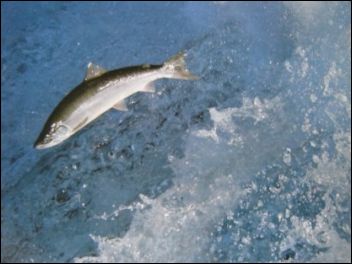




























































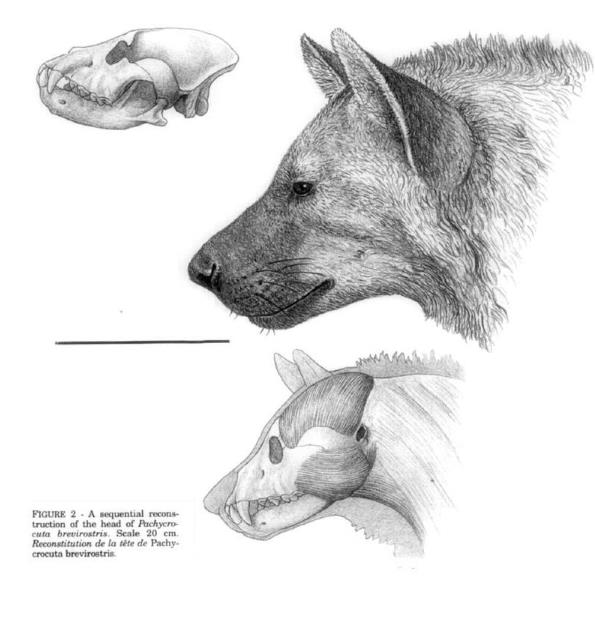
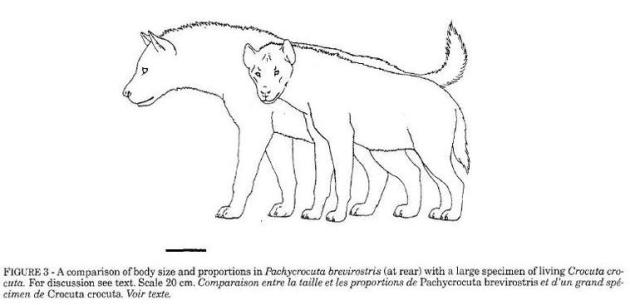
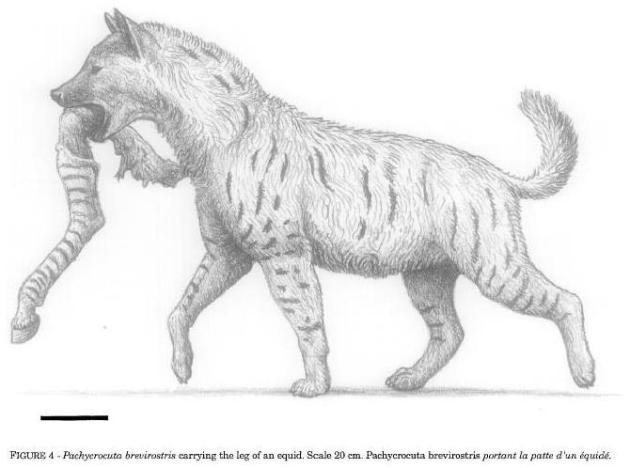

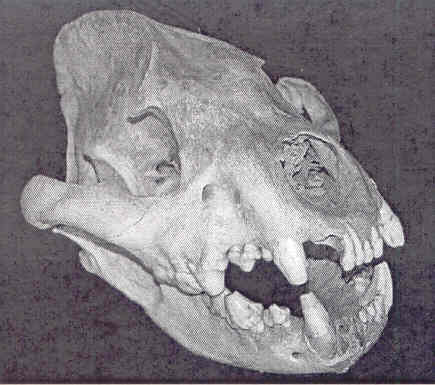



































 Zowel vader als moeder kan hemofilie overdragen. Een vader met hemofilie zal dochters krijgen die draagsters zijn; de overdracht zal dus niet direct ‘zichtbaar’ zijn (de dochters zullen geen klinische effecten vertonen). Een moeder die draagster is heeft één kans op twee om een gezonde dochter te krijgen, en ook één kans op twee om een zoon zonder hemofilie te krijgen.
Zowel vader als moeder kan hemofilie overdragen. Een vader met hemofilie zal dochters krijgen die draagsters zijn; de overdracht zal dus niet direct ‘zichtbaar’ zijn (de dochters zullen geen klinische effecten vertonen). Een moeder die draagster is heeft één kans op twee om een gezonde dochter te krijgen, en ook één kans op twee om een zoon zonder hemofilie te krijgen.




 anomura (germany )
anomura (germany )

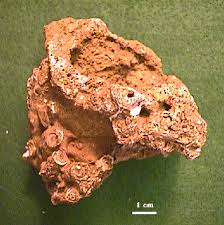

































 Modern dinoflagallates, found off the shore of South Africa, viewed by light microscopy.
Modern dinoflagallates, found off the shore of South Africa, viewed by light microscopy.

 Digoflagellate
Digoflagellate



















Recente reacties